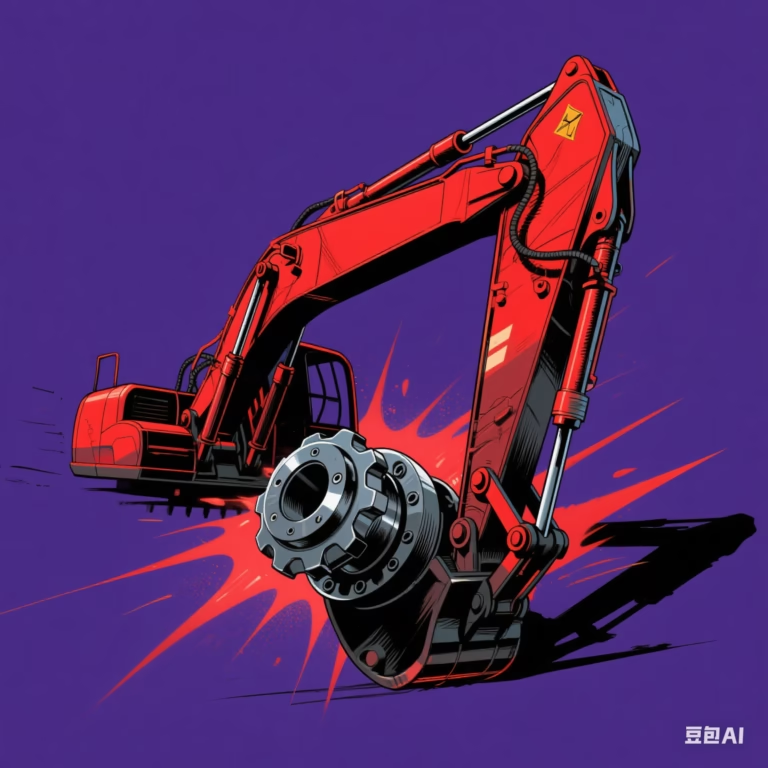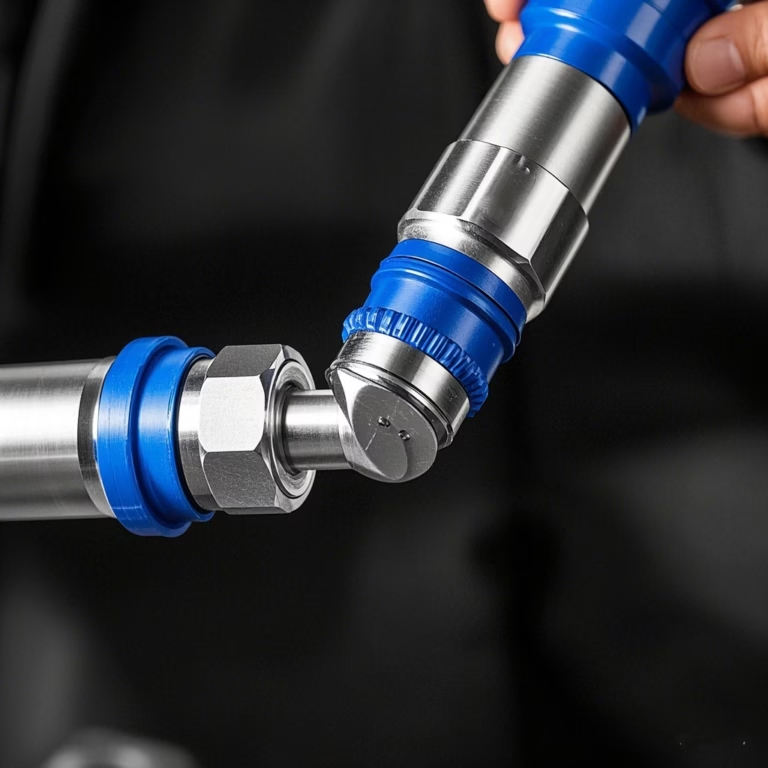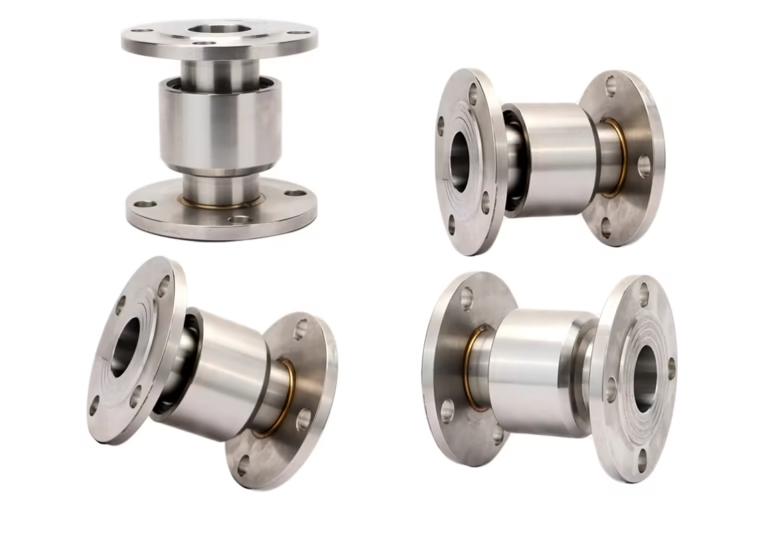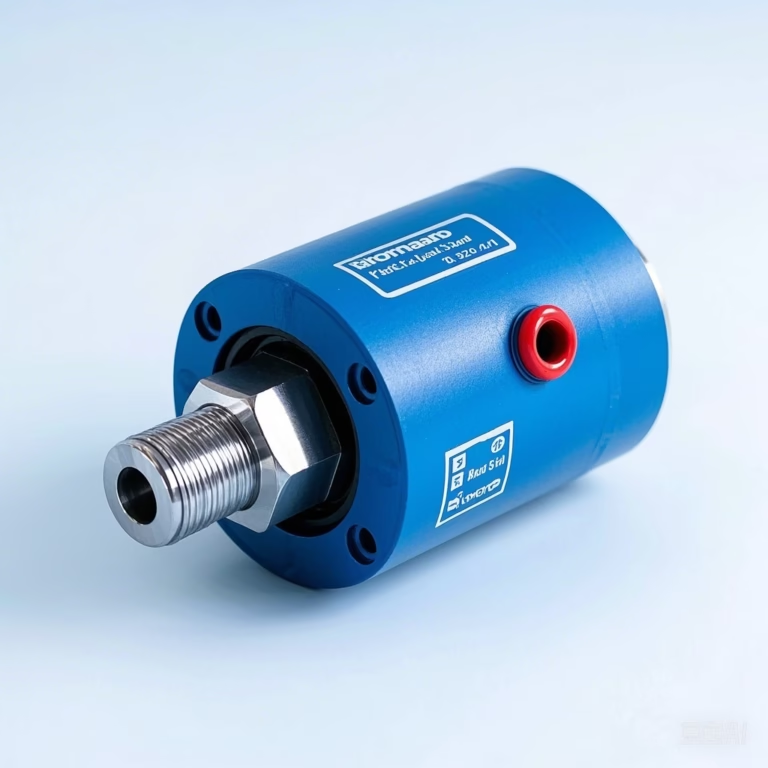What do rotary union swivel joints cost?
Introduction
Rotary union swivel joints play a crucial role in numerous industries, facilitating the transfer of fluids (such as water, oil, and steam) or gases between stationary and rotating machinery parts. If you’re in the market for these joints, one key question likely stands out: What do rotary union swivel joints cost? In this detailed blog post, we’ll explore the factors influencing their prices, provide price ranges for different types, and offer strategies to maximize your investment value.
Understanding Rotary Union Swivel Joints
Before discussing costs, it’s vital to grasp what rotary union swivel joints are and how they function. Designers create these joints to enable smooth media transfer while allowing one equipment part to rotate relative to another. Industries use them in applications ranging from industrial machinery and printing presses to packaging equipment and medical devices.
A typical joint features a stationary housing and a rotating shaft or element. Seals are a critical design component, ensuring no leakage during rotation. Design complexity varies with application needs, directly impacting the price.
Factors Affecting the Price of Rotary Union Swivel Joints
Material of Construction
Metals:
Stainless Steel:
Due to its corrosion resistance, stainless steel is a popular choice for rotary union swivel joints. It withstands harsh environments, including exposure to moisture, chemicals, or high temperatures. Joints made of stainless steel generally cost more than those from other materials. For example, a basic stainless steel joint for low-pressure use (up to 100 psi) starts at $200–$500. In high-pressure industries like oil and gas (500–1000 psi), prices range from $1000–$3000 or more, depending on size and complexity.
Carbon Steel:
Compared to stainless steel, carbon steel offers a more cost-effective option. It suits applications where corrosion is not a major concern, such as agricultural machinery or general industrial equipment. A carbon steel joint for low-to-medium pressure (up to 300 psi) typically costs $100–$300.
Alloy Steels:
Manufacturers blend alloy steels with elements like chromium, nickel, or molybdenum to enhance specific properties, making them suitable for high-performance applications requiring strength and durability. The price of alloy steel joints can match or exceed that of stainless steel counterparts, depending on the alloy and application.
Non-Metallic Materials:
Plastics:
Manufacturers use plastic components in some rotary union swivel joints, especially for applications with non-corrosive media and low pressure. Plastics offer advantages like lightweight construction and cost-effectiveness. A plastic joint for household or small-scale irrigation, low-pressure water transfer might cost as little as $10-50, but is unsuitable for high-pressure or high-temperature use.
Composite Materials:
Engineers use composite materials, which combine properties of different materials, in advanced joint designs to balance strength, corrosion resistance, and weight. Their prices vary widely based on materials and applications, generally exceeding plastic joints and ranging from $300–$800, similar to mid-priced metal joints.
Pressure and Temperature Ratings
Low-Pressure Joints:
Designers create low-pressure joints (up to 100–200 psi) to be more affordable, commonly using them for small-scale fluid transfer in laboratories or consumer products. A plastic or basic metal alloy low-pressure joint costs $20–$200, depending on material and size.
Medium-Pressure Joints:
Medium-pressure joints (200–500 psi) require more complex designs and stronger materials, such as better-quality seals. These joints, used in general industrial machinery, food and beverage processing, and hydraulic systems, range in price from $200–$800.
High-Pressure Joints:
High-pressure joints (500 psi and above, up to thousands of psi) come at a significant premium due to their specialized seals and construction from high-grade stainless steel or alloy steel. Industries like oil and gas, which rely on high-pressure fluid transfer, use these joints, priced from $800–$5000 or more.
Temperature Ratings:
Low-Temperature Applications:
For media temperatures below 100°C, standard materials and seals suffice, aligning prices with pressure-based pricing. A low-temperature, low-pressure plastic joint, for example, costs around $10–$50.
High-Temperature Applications:
Handling media above 100°C (especially steam, reaching 200–300°C or higher) requires high-temperature-resistant metals like specific stainless steel grades and high-performance seals. Such joints for steam applications cost $ 50–$3000 or more, depending on pressure and design.
Size and Complexity of the Joint
Size:
Small-sized joints, ideal for limited-space or small-volume fluid transfer (e.g., precision medical devices or small-scale electronics), are generally cheaper, costing $50–$200.
Larger joints, necessary for high-volume fluid transfer or heavy-duty machinery (e.g., industrial heat exchangers or hydraulic systems), come at a higher cost, ranging from $1000–$5000 or more.
Complexity:
Single-Passage vs. Multi-Passage Joints:
Single-passage joints, designed for transferring one fluid or gas, have simple designs and lower costs, with basic models priced at $50–$500 based on material and pressure ratings.
Multi-passage joints, engineered to handle multiple media simultaneously, require complex internal structures and precise seals, costing $500–$3000 or more, depending on the number of passages (2–6+).
Special Features:
Joints with built-in sensors for monitoring flow, pressure, or temperature are more complex and expensive, ranging from $1000–$5000+. High-speed rotation joints, essential for smooth operation in printing presses, also carry a premium, costing $800–$4000+.
Brand and Manufacturer Reputation
Well-established brands with a track record of quality and reliability often charge more for their joints. These manufacturers invest in R&D, use high-quality materials, and maintain strict quality control. For example, a Deublin joint may cost 20–50% more than a similar product from an unknown manufacturer, but the higher price reflects a longer lifespan, better performance, and lower maintenance needs.
Newer or lesser-known manufacturers may offer cheaper options, but buyers should research product quality, customer reviews, and after-sales support. A low-priced joint from an unproven source might seem appealing initially, but could incur higher long-term costs due to early failure or frequent repairs.
Quantity and Purchase Volume
Buying in bulk often leads to significant savings, as many suppliers offer volume discounts. For instance, a single joint might cost $200, but purchasing 10 or more could reduce the per-unit price to $160–$180 with a 10–20% discount. Some suppliers also offer incentives like free shipping, extended warranties, or flexible payment terms for large orders, benefiting businesses with high demand.
Market Demand and Supply
Market conditions, including supply and demand dynamics, can also affect pricing. In periods of high demand or limited supply, prices may rise. Conversely, during economic downturns or oversupply situations, prices may become more competitive.
Market Trends and Industry Developments
To gain a comprehensive understanding of rotary union swivel joint pricing, it is essential to consider current market trends and industry developments.
Technological Advancements
The rotary joints market is continuously evolving with technological advancements. Innovations in sealing technology, material science, and manufacturing processes are driving the development of more efficient and reliable products. These advancements often come with a price premium but can offer significant benefits in terms of performance, durability, and reduced maintenance costs.
Example: The introduction of balanced mechanical seals in rotary joints has improved their performance and lifespan. While this technology may increase the initial cost, it can lead to long-term savings by reducing the frequency of maintenance and repairs.
Growing Demand Across Industries
The demand for rotary union swivel joints is growing across various industries. The increasing automation in manufacturing, the expansion of oil and gas exploration activities, and the development of renewable energy infrastructure are all contributing to this growth. As demand increases, manufacturers may adjust their pricing strategies to reflect market conditions.
Example: The renewable energy sector, particularly solar power generation, relies on rotary joints for the transfer of cooling fluids in tracking systems. The growth of this sector is expected to drive demand for rotary joints, potentially influencing pricing.
Focus on Customization and Specialization
With the increasing complexity of industrial applications, there is a growing demand for customized and specialized rotary joints. Manufacturers are responding to this demand by offering tailored solutions that meet specific customer requirements. While customization can add to the cost, it ensures that the rotary joint is optimized for the intended application, leading to better performance and efficiency.
Example: DSTI – Dynamic Sealing Technologies offers specialized rotary union design and manufacturing services. Their ability to provide custom-tailored solutions for specific customer needs is a significant advantage, albeit at a potentially higher price point.
Practical Advice for Buyers
When considering the purchase of rotary union swivel joints, buyers should keep the following advice in mind to ensure they make informed decisions. Define Your Requirements Clearly Before approaching suppliers, clearly define your requirements.
Consider factors such as Media Type: The type of fluid or gas to be transferred (e.g., water, oil, steam, air). Pressure and Temperature Ratings: The maximum pressure and temperature the joint will be subjected to. Size and Nominal Diameter: The size of the joint required for your application. Number of Passages: Whether a single-passage or multi-passage joint is needed. Environmental Conditions: The operating environment, including exposure to corrosive substances or extreme temperatures.
Price Ranges for Different Types of Rotary Union Swivel Joints
1. Basic Industrial Rotary Union Swivel Joints
Ideal for light manufacturing or small-scale machinery, these single-passage joints (carbon steel or basic stainless steel, up to 300 psi) cost $100–$500. They suit applications like coolant transfer in machining or low-pressure air in workshop pneumatic systems.
2. High-Performance Industrial Rotary Union Swivel Joints
Required for demanding environments like automotive manufacturing, these joints (high-grade stainless steel/alloy steel, 1000 psi+) with potential high-speed features range from $500–$3000. Uses include hydraulic oil transfer in precision equipment or high-pressure steam in power generation.
3. Sanitary Rotary Union Swivel Joints
Engineered for hygiene-critical industries (food, pharmaceutical, medical), these stainless steel joints with anti-contamination finishes vary widely in price. Basic models for small-scale food processing cost $200–$800, while complex multi-passage versions for large-scale production can reach $800–$5000+.
4. Specialty Rotary Union Swivel Joints
Designed for extreme environments (deep-sea oil, aerospace), these highly customized joints start at $3000 and can exceed tens of thousands of dollars, depending on pressure, temperature, and material requirements.
Tips for Getting the Best Price on Rotary Union Swivel Joints
1. Research Multiple Suppliers
Avoid settling for the first option. Use platforms like Alibaba and Made-in-China to compare prices and offerings from various suppliers. Prioritize those with positive reviews and a reputation for reliability.
2. Request Quotes and Negotiate
Once you have shortlisted potential suppliers, request quotes for the specific rotary joints you require. If possible, ask for samples to evaluate the quality and performance of the products firsthand. This can help you make a more informed decision and ensure that the chosen product meets your expectations. Contact suppliers directly with detailed specifications (material, pressure, size, features) to get accurate quotes. Don’t hesitate to negotiate, especially for bulk orders—suppliers often offer discounts or better terms for repeat customers.
3. Consider Alternative Materials or Designs
If budget is a constraint, explore cost-effective materials like carbon steel (for non-corrosive environments) or simpler designs that still meet your needs. Always verify that alternatives won’t compromise safety or performance, consulting engineers if unsure.
4. Plan for Long-Term Costs
Look beyond the initial price tag. High-quality joints from reputable manufacturers may cost more upfront but save money through reduced maintenance and longer lifespans. Seek products with extended warranties as a sign of manufacturer confidence.
Case Studies and Real-World Applications
To illustrate the pricing and application of rotary union swivel joints, let’s consider a few case studies and real-world applications.
Case Study: Oil and Gas Industry In the oil and gas industry, rotary joints are used in drilling rigs and production equipment to transfer hydraulic power and cooling fluids.
A typical application might involve a high-pressure rotary joint designed for use in a drilling motor. The pricing for such a joint would depend on factors such as the pressure rating, size, and material. For example, a stainless steel rotary joint with a pressure rating of 5000 psi and a nominal diameter of 2 inches might cost around USD 1500to2000.
Case Study: Paper Industry In the paper industry, rotary joints are used in paper machines to transfer steam and condensate.
These joints are critical for maintaining the efficiency and performance of the paper-making process. A common application is the use of steam joints in dryer cans. The pricing for these joints would depend on factors such as the size, material, and the number of passages. For example, a 3-inch steam joint made of stainless steel with multiple passages might cost around USD 1000to1500.
Case Study: Automation and Robotics In automation and robotics, rotary joints are used in rotary tables and indexing systems to transfer pneumatic or hydraulic power.
These joints need to be compact, efficient, and reliable. The pricing for such joints would depend on factors such as the size, design complexity, and the number of passages. For example, a compact rotary joint with a single passage designed for use in a robotic arm might cost around USD 50to100.
FAQs :
Q: What is the typical price range for rotary union swivel joints, and what factors influence cost variations?
A: Prices for rotary union swivel joints vary widely, typically ranging from XXXtoXXXX+ depending on size, material (e.g., stainless steel vs. carbon steel), pressure/temperature ratings, sealing technology (mechanical vs. fluid seals), and customization requirements. Complex designs for harsh environments or high-precision applications command higher costs.
Q: How does customization affect the pricing of swivel joints compared to standard models?
A: Customized rotary unions—tailored for specific fluid types, rotational speeds, or integration with unique systems—often incur higher costs due to engineering design work, prototyping, and specialized manufacturing processes. Standard off-the-shelf models are more cost-effective but may lack flexibility for niche applications.
Q: Why do prices differ between brands/suppliers for seemingly similar swivel joint specifications?
A: Price disparities arise from differences in manufacturing quality (e.g., CNC precision vs. manual machining), certification standards (ASME, ISO), warranty coverage, and supplier location (local vs. international shipping). Established brands may also charge a premium for patented technologies or reputation-backed reliability.
Conclusion
The price of rotary union swivel joints varies based on material, pressure, temperature ratings, size, brand, and purchase volume. You can make informed decisions by understanding these factors and conducting thorough research. Whether sourcing basic industrial joints or specialized high-performance models, comparing prices, negotiating terms, and prioritizing long-term value will help you secure the best investment. The right joint not only ensures equipment efficiency but also contributes to overall operational profitability.







